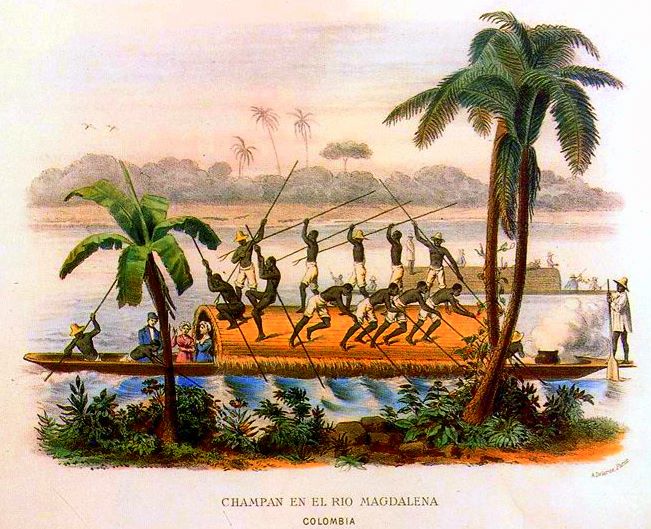The Magdalena has a deep draft for much of the initial part. After that they probably used barques and other shallower draft boats.
But how did the sail against the current?
They would use oars if they were in a barque. On the big boats they just used a sail. River currents are nothing compared to ocean currents.
What do you mean by how?
They used smaller ships than what was used on the ocean
But how did the sail against the current?
Same as today
Use oars and stay near the sides.
If you took a bunch of fit people and tried to paddle it you could but it’s hard work and you want to shore anytime you wanted to break to avoid losing all progress
If they had the wind then they wouldn’t need it
Magdelena was a miserable trip though
Incredible.
I also found this passage in Davis’ “Magdalena: river of dreams”, which talks of “bogas”, the often black people that were tasked with navigating river transport (although I guess it should be recognized that this is about 260 years after Gonzales Jimenez de Quesada):

As he traveled up the Magdalena in 1801, Alexander von Humboldt described the complex choreography. With the depth and volume of water,it was rarely possible for the bogas to make contact with the actual bed of the river. Thus, the massive champanes, some capable of carrying 120 bales of cargo, each with a weight of 250 pounds, had to cling to the shores,allowing the men purchase and leverage for their poles: roots and tree trunks, gravel banks and mudflats. As a helmsman steered the flat-bottomed vessel from the stern, the pilot orchestrated the movement of the men. In the bow, beyond the protective awning, the six bogas, all naked save for loincloths, each wielded a two-pronged pole three times the height of a man. As three of them moved toward the awning, pressing their poles against their chests, the other three walked toward the front of the vessel,with arms uplifted, holding their poles horizontally above the heads of those engaged. Three of the bogas reached the bow precisely as the other half of the team came to the awning. At that instant, be it day or night, those at the bow dropped their poles into the water, while those at the awning swung theirs up in the air. The result was a continuous motion, a constant momentum such that the champán never had a chance to slip back downstream. The work demanded what Humboldt called “Herculean strength,” but muscle power alone was not enough. The bodies of the men,callused and scarred across the nipples and chest from the constant friction of the poles, had to move in rhythm, with the precision of a well-drilled military unit. Humboldt saw it as a form of dance, a perfect balance of power and grace.

